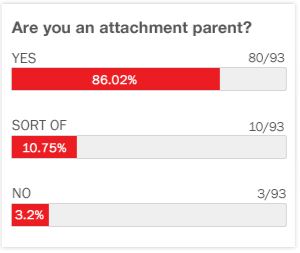
“Do you think my sons fearful approach to everything new is because of his age, the fact that he was adopted, or is it just his nature? (18-month-old child)
“My three year old’s high energy is hard for me. Will she always be so hyper? My other daughter can sit and play by herself, but her sister wants my attention all of the time.”
These are typical questions I hear from parents. Understanding a child’s temperament and normal growth and development are ways to make sense of behavioral issues, social interactions, preferences, and power struggles.
“Temperament” is a person’s first and most natural way of responding. It’s the way we move in the world. It’s the “how” of behavior—for example, how adaptable, persistent, energetic, or intense a person is. Just as some children have curly hair and others have straight hair, some children are high-energy right from birth and want to climb and run non-stop, while others are happy to play with toys or watch you while you cook. Children come into the world with a style all their own, and as with developmental milestones, there’s a wide range of normal.
In the 1950’s parents (especially mothers) were blamed for all behavior problems. The pioneers in temperament research, Dr’s Stella Chess and Alexander Thomas, were convinced that children had innate differences that played a key role in determining a child’s behavior. They knew competent and loving parents who had challenging children and they found that babies varied in their behavior and reactions to the world around them. Chess and Thomas defined these differences as nine temperament traits: sensitivity threshold, activity level, intensity of reaction, rhythmicity, adaptability, mood, approach/withdrawal, persistence, and distractibility.
When I first learned about temperament I saw my children and myself in a new light. It was the missing piece of the puzzle, giving me a fresh understanding of difficulties I had when my expectations and demands didn’t fit well with my children’s style and needs.
The mother who is worried about her 18-month old child, who is fearful, has good insight in to the possible causes. He’s probably slow-to-warm up and may also be sensitive and slow adapting to new things. His age and developmental stage fit’s with his fearfulness since we know that at 18 months many children are afraid of things that they were neutral about in the past. They’re learning so much each day, they’re becoming more independent, and they have to integrate their new experiences with their view of the world. Sometimes children need mom, dad, or a caregiver to be close at hand so they can come back to a safe lap and refuel. The fact that this child was adopted might play a part in his cautious approach to things, or it could be the other factors. Sometimes we just don’t know, but need to follow our intuition and respond with all of our understanding. It’s important to be sensitive to the challenges children face when they’ve been adopted, while keeping in mind that a child’s normal temperament can have significant impact on their behavior.
There are many factors that influence your child’s behavior—including parenting style, environment, genetic makeup, past events, and siblings. Temperament is a key part of the equation. In the earlier example of the child who is high energy and demands attention, chances are she is also intense, and because her mother is used to her older child who is different, she still hasn’t adjusted to having a “spirited child.” At all stages of development active and intense children need creative outlets for their energy and often want someone around for company. They love attention and interaction, and can be draining for a parent who is lower in energy, stressed, or desires a calm and quite environment.
There are no good or bad temperaments, but some children have temperaments that may be more challenging than others for you. So much depends on your own temperament, and how well you and your child fit with each other.
For example:
• Your high-energy daughter wants you to play ball with her when she wakes up, but you have lower energy and want to read the paper. Her high energy gets on your nerves, even though it’s normal for her.
o Set a routine for how long you will read and help her decide what she’ll do till it’s time to play with you.
• Your son is slow to warm up, and when you go to a friend’s house he wants to sit on your lap. You’re outgoing, and it’s hard for you to tolerate his caution.
o Give him time to get comfortable, and then he’ll be more likely to play with the other children once he’s checked out the situation.
• You’re fast adapting, high intensity, and yell easily. Your child is low intensity, sensitive, and slow to adapt.
o Do your best to lower your voice and calm down before you react to difficulties getting dressed in the morning. Take three deep breaths before responding, and use a timer so everyone will know when it’s time to move on.
Strategies for addressing temperament can be as simple as providing fun activities and chores to keep high-energy kids busy, giving plenty of transition warnings to kids who adapt slowly, and making sure spirited kids get all the healthy food and sleep they need. Parenting strategies also include making time for yourself, paying attention to your needs, and getting help from the “village” around you.
Keep thinking about your children’s strengths, and help them find things they’re passionate about. Often you won’t know if a behavior is because of in-born traits, environmental factors, developmental stages, or past experiences.
See it as a puzzle with many pieces, and when you put them together you get a picture of a child who is complex and beautiful. If you’re concerned about milestones in development, research the wide range of normal development, and talk to your child’s doctor.
This article was originally published in the September 2011 issue of the Golden Gate Mothers Group Magazine, S.F. California.
Rona Renner, RN (“Nurse Rona”) has been a nurse for 46 years, a parent educator for 26 years, is the mother of four grown children, grandparent of two She’s available for temperament consultations and parent coaching in person or by phone and can be reached at Rona@NurseRona.com. To learn more go to www.NurseRona.com.
Article Categories:
Category:
Related Articles You May Like
About Rona Renner, RN
Rona Renner has been a Registered Nurse for 46 years with a wide range of experience in health care. In the last 20 years she has focused her attention on pediatrics, parent education and advocacy, ADHD and learning differences. In 1992, she was trained by Kaiser Permanente Medical Center as a temperament counselor to help parents understand their child's behavior, and she co-wrote the temperament based parenting class manual. In 2002, she founded Childhood Matters, a non-profit organization producing radio shows in English and Spanish. "Nurse Rona" hosted a weekly call-in radio show for over nine years, and has appeared on many television shows, including CNN and 20/20. Rona is the author of Is That Me Yelling, a book aimed to help parents learn how to effectively communicate with their kids by focusing on their child's unique temperament, and their own. She loves working with parents one-on-one, in groups, or in large workshops. Rona is happily married, has four adult children, and two grandsons.











